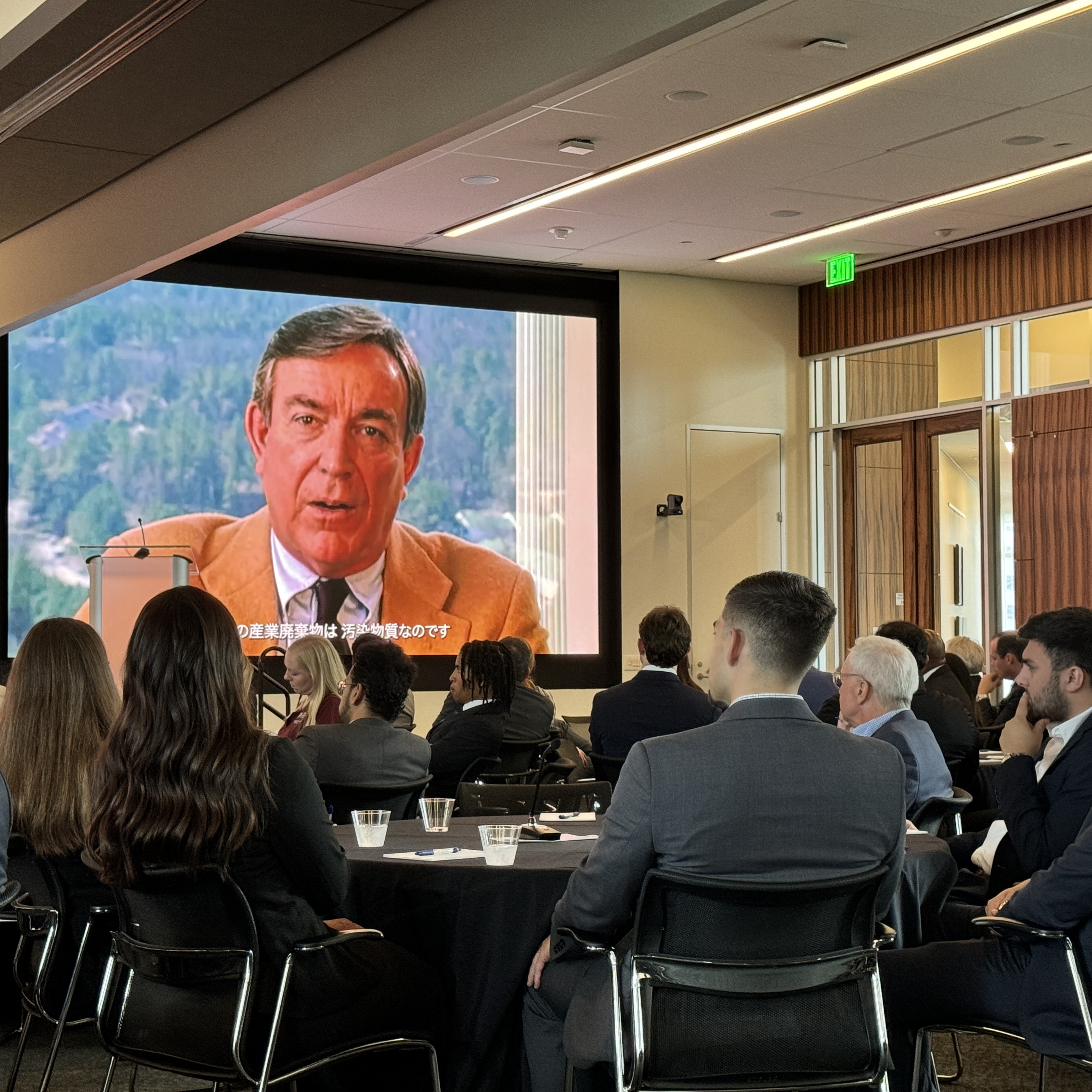

Government officials, industry executives, academic leaders, and students gathered at Amergy Bank Tower on April 17 for “Good Business and Beyond Zero” – a symposium exploring the past, present, and future of commercializing beyond net zero. Organized by Steve Stephens, CEO of Amergy Bank and past chair of the University of Houston Board of Visitors, the event included a showing of the documentary “Beyond Zero” by Nathan Havey and discussions by Houston’s top business leaders.
“Beyond Zero” documents the rise of Interface, a global commercial flooring manufacturer and largest supplier of carpet squares (or modular carpet), and the company’s path towards reducing its carbon footprint, achieving net zero, and continuing efforts to move beyond zero. In 1995, influenced by a downturn in sales and the emergence of sustainable business practices, Interface’s founder, Ray Anderson, declared the company would make significant progress toward sustainability by the year 2000.
For Interface, the journey beyond net zero was not just about the financial bottom line but about saving the earth. The company wanted to “create a climate fit for life.” As they worked together to develop more sustainable practices, Interface persuaded its suppliers to prioritize innovation and, therefore, build a more sustainable supply base for the company. Interface was able to build a company that is both sustainable and profitable.
Following “Beyond Zero,” executives from across Houston’s diverse industries participated in several “PowerTalk” panels to understand each company’s perspective and work toward sustainability. Hines College dean Patricia Belton Oliver, FAIA, moderated a discussion with leaders from the architecture, engineering, and construction (AEC) industries, including Chris Rector (Hines), Jon Pickard (Pickard Chilton Architects), Jerae Carlson (CEMEX), and David Harvey (Harvey Builders). The College’s namesake, Gerald D. Hines, was a global, innovative force in sustainable design, and many of these companies worked directly with Hines.
"I was honored to present stellar examples of leaders in our AEC industries who have made a true pledge to realizing the 2030 Challenge," said Oliver. "The leaders in our small group have impacted over 50 countries, 400 cities, and thousands of offices worldwide from a position of unwavering commitment to sustainability."
Keith Probyn, Vice President of Real Estate Americas at Shell US, Inc., and a member of the Hines College Leadership Council, was among the industry professionals involved in the symposium. Probyn joined a discussion moderated by Christ Angelides of Ernst & Young Consulting, exploring the oil and gas industry’s approach to sustainability and net zero.
“To tackle this global challenge, governments, industry, and society need to collaborate and make choices,” shared Probyn. “From my experience of running our NZE Pathway Program for our real estate portfolio, collaboration is key, especially with your supply chain. Many of the frameworks, methodologies, tools, and best practices we use have been developed with the suppliers we will now use to realize our goals and ambitions.”
Students from the University of Houston, Rice University, and Texas A&M University attended the symposium to learn from these beyond the classroom discussions and network with industry professionals. The event was a crucial opportunity for students to understand and see in action how industry, government, and academia can come together, bringing each area’s expertise toward a common goal. The symposium served as a pivotal moment for many students, shifting their mindsets toward sustainability and industry as they prepare to begin their professional careers.
“The story of Ray Anderson and his efforts to lead his company, Interface Carpets, from a conventional carpet maker to a producer of carbon-negative carpets is a compelling example of how responsible business practices can produce both sustainable products and profits,” shared Hines College graduate architecture student David Schuman. “The sobering fact is that it took 20 years of small steps and occasional failures for just one company to get there. We must see that sustainability is more than an architectural characteristic like color or texture. To be effective, it must be at the forefront of all our design decisions.”